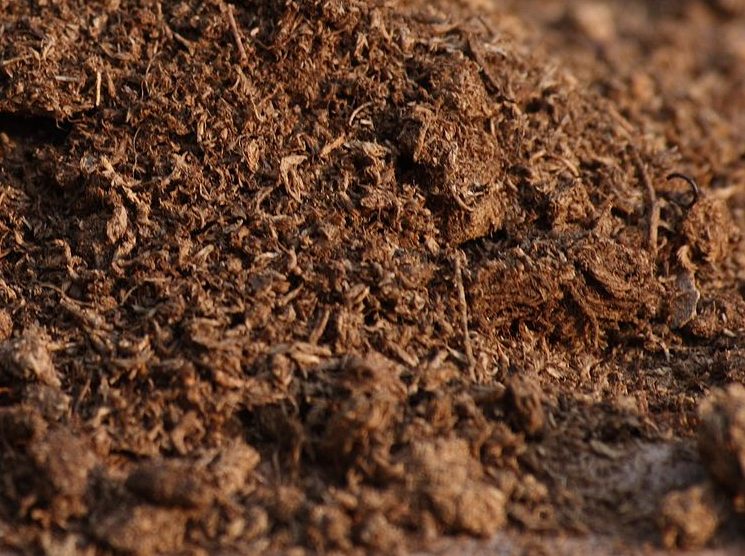Want to know how to spread peat moss? If you’ve been gardening for quite some time, then you’d know that peat moss is a great soil amendment. There are about 12,000 species of moss, but only around 380 species can create peat.

How to Use and Spread Peat Moss for Your Plants
Here’s a step-by-step guide on how to use peat moss for your plants:
Step #1: Find out your soil’s pH level
Before applying the peat moss, you need to consider the type of plant you’re growing, as well as the pH level of your soil. Peat moss is naturally acidic, so it’s best to use them for acid-loving plants, such as blueberries, holly, and gardenias. Also, you can use them in naturally alkaline or neutral soil.
Step #2: Wet your peat moss thoroughly before using it
Take as much peat moss as you need and place it into a large container. Add water, stir, and let the peat moss soak for a couple of minutes until everything is completely soaked. When you squeeze the moss, only a few drops of water should come out of it; not a whole stream.
Be sure NOT to skip this step because dry peat moss will not retain water.
Step #3: Apply peat moss on top of the soil
Apply two to three inches of peat moss on top of your garden or soil. If you’re using a container or raised beds, you can mix 1/3 and 2/3 of peat moss and compost or potting soil. If you use it for starting seeds, mix one-part perlite and one part peat moss.
You can also use 1/3 perlite, 1/3 peat moss, and 1/3 soilless mix.
Keep in mind that peat moss doesn’t contain enough nutrients on its own, so make sure to fertilize your plants regularly.
The Benefits of Peat Moss
Here are some of the benefits of using peat moss:
Benefit #1: Peat moss prevents soil compaction
Compared to other organic materials, peat moss is not compact. If your soil becomes compact, it won’t be able to help your plants as it reduces water absorption. This means that your plants will have a hard time getting enough water to survive. Peat moss retains water, so your plants will stay hydrated and prevent soil compaction.
Benefit #2: Peat moss is a sterile medium
They don’t contain harmful chemicals, weed seeds, and other elements that are harmful to your plants. It’s a great starting medium for tender plants that need more attention and care. This is also one of the reasons why it’s a good idea to add peat moss to your starting mix.
Benefit #3: Peat moss is absorbent
As mentioned, peat moss can retain water better than just soil, making it a great addition to your garden.
The Benefits of Growing Plants in a Semi pro Greenhouse
Growing your plants inside a semi pro greenhouse is one of the best decisions you’ll ever make. If you haven’t tried growing plants in a greenhouse or if you’re still on the fence, here are some of the benefits of having a semipro greenhouse:
Protection from pests and diseases that can harm your plants
Pests like aphids, caterpillars, spider mites, and thrips, as well as larger animals such as rodents, moles, and deer, would love to munch on your produce. Exposed plants are also more susceptible to diseases and infection.
If pest infestations and diseases affected your plants in the past, it’s best to grow them inside a semi pro greenhouse. This enclosed structure lowers the risk of insects getting inside and infectious diseases from reaching your plants.
It’s a great alternative for gardeners who don’t have much space
Gardening requires space, but if you don’t have much of it, you don’t need to forego gardening altogether. A mini greenhouse is a great alternative for gardeners without much space for planting flowers and crops. Mini greenhouses have a standard size of about six feet, so you can easily place them on your balconies, living area, or decks.
There are smaller sizes available as well if the standard semi pro greenhouse is too large for you. Even though these greenhouses are small, it has the same benefits as regular greenhouses do.
You can create your own microclimate
This is, by far, the biggest benefit of greenhouse gardening. You’ll be able to create a suitable growing environment for your plants regardless of the weather.
For instance, you can grow warm-weather plants in colder regions with the help of supplemental tools, such as heating systems, grow lights, and more. Creating a microclimate allows you to grow plants all year round.
Protection from bad weather
Extreme weather conditions like snow, ice, heavy rains, high winds, and storms can easily damage even the hardiest plants. Planting them inside a greenhouse can protect them from bad weather.
They can stay inside the structure and continue to grow healthily. Once the weather warms, you can transplant your plants outside if you prefer to.
The Bottom Line on How to Spread Peat Moss
Using peat moss has its pros and cons, however, it’s genuinely effective when used for your plants. It’s important to know to spread peat moss properly to ensure that it’ll work for your benefit and help retain water, prevent weeds, and provide nutrients.
